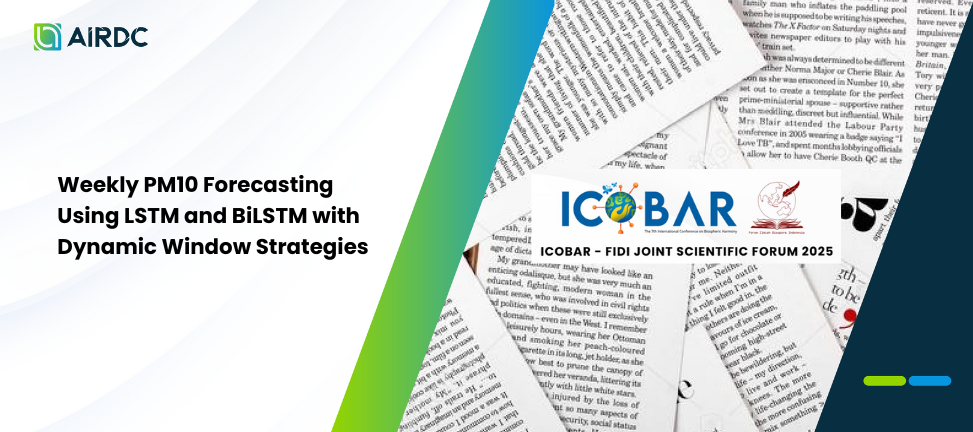Weekly PM10 Forecasting Using LSTM and BiLSTM with Dynamic Window Strategies

Timely and accurate forecasting of particulate matter 10 microm-eters (PM10) concentrations plays a critical role in supporting public health protection and guiding air pollution mitigation strategies. This study evalu-ates and compares the performance of long short-term memory (LSTM) and bidirectional long short-term memory (BiLSTM) models for weekly PM₁₀ forecasting in Andhra Pradesh, India, using a dynamic window approach over multiple forecast horizons (1, 2, 3, 4, 8, and 12 weeks ahead). The key novelty of this research lies in the integration of Adaptive Conformal Prediction (ACP) with deep learning models to generate dynamic prediction intervals that reflect changing uncertainty over time. This approach not only predicts future PM10 but also quantifies the confidence of each prediction. The find-ings reveal that BiLSTM performs best for short-term forecasts (MAE of 263.52 and RMSE of 366.85 for one week ahead), while LSTM is more stable for longer horizons. The ACP method consistently provides 95% prediction interval coverage between 86% and 89%, supporting reliable and interpreta-ble forecasting. This combined method offers a practical tool for sustainable air quality management and public health planning.
Authors:
Mahmud Isnan, Dede Fauzi, Kuncahyo Setyo Nugroho, Bens Pardamean
2025 International Conference on Biospheric Harmony (ICOBAR)

